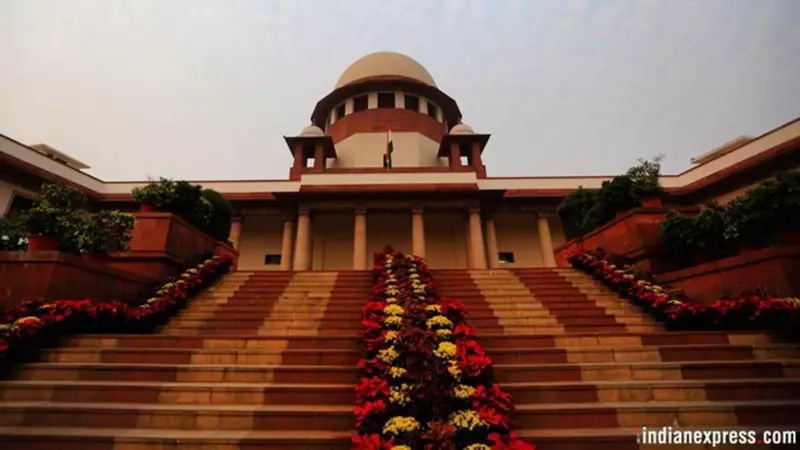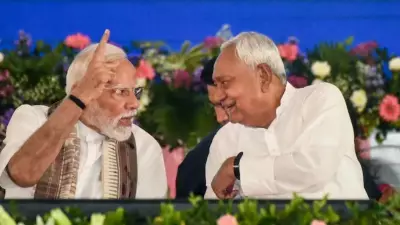
Supreme Court Split Over Retrospective Environmental Approvals
The Supreme Court of India witnessed a significant division among its judges regarding the controversial issue of retrospective environmental clearances for construction projects. While Chief Justice BR Gavai and Justice K Vinod Chandran agreed to recall a previous judgment that prohibited such approvals, Justice Ujjal Bhuyan delivered a powerful dissenting opinion that has captured national attention.
The Core Conflict: Majority vs Dissent
In a notable development on November 18, 2025, the Supreme Court bench saw Justice Bhuyan sharply disagreeing with his colleagues on the bench. The majority opinion led by CJI Gavai and Justice Chandran decided to recall the court's May 16 judgment that had struck down the government's power to grant environmental clearances retrospectively to projects that had already begun operations without proper approvals.
The judges in majority issued separate but concurring verdicts that effectively set aside the earlier ruling and referred the matter to an appropriate bench for fresh consideration. However, Justice Bhuyan characterized this review judgment as a "step in retrogression" in his strongly-worded dissent.
Background of the Environmental Legal Battle
The original May 16 verdict came from a bench comprising Justices A S Oka and Bhuyan, which had declared illegal a 2017 notification from the Ministry of Environment that permitted ex-post facto environmental clearances. The court had also nullified a 2021 Office Memorandum issued by the same ministry that operationalized the 2017 notification.
The 2017 notification had essentially created a six-month amnesty window between March and September 2017, allowing projects that had commenced work without obtaining mandatory environmental clearance under the 2006 Environment Impact Assessment notification to seek retrospective approvals. The 2021 memorandum further established a standard operating procedure for handling such violation cases.
Justice Bhuyan's Crucial Environmental Principles
In his dissenting notes, Justice Bhuyan outlined several fundamental environmental principles that he believes are compromised by allowing retrospective clearances:
The concept of ex-post facto environmental clearance is completely alien to environmental jurisprudence and contradicts both the 1994 and 2006 EIA notifications. The judge emphasized that environmental compliance should not be viewed as an obstacle to development but rather as an essential component of sustainable development and inter-generational equity.
Justice Bhuyan specifically addressed what he called a "false narrative" pitting environment against development, stating that "ecology and development are not adversaries." He referenced the deadly Delhi smog as a daily reminder of environmental pollution hazards and stressed the Supreme Court's constitutional duty to safeguard the environment.
The judge highlighted that the precautionary principle remains the cornerstone of environmental jurisprudence, while the polluter pays principle serves only as a measure of reparation. He expressed concern that the court was backtracking on established environmental jurisprudence through a review petition filed by parties who had shown "scant regard for the rule of law."
Key Players and Proceedings
The review petition was filed by the Confederation of Real Estate Developers Association of India, representing real estate developers across the country. Notably, the Ministry of Environment, Forests and Climate Change - which had originally issued the 2017 notification and 2021 memorandum - did not file any review petition against the Vanashakti judgment.
Justice Bhuyan pointed out that "MOEF&CC has accepted the verdict of this Court in Vanashakti," indicating that even the originating ministry had acquiesced to the original judgment prohibiting retrospective clearances.
The hearing preceding this verdict took place on October 9, when a bench headed by the Chief Justice reserved judgment after hearing arguments from several senior advocates including Kapil Sibal, Mukul Rohatgi, and Solicitor General Tushar Mehta. These legal representatives appeared for various industrial and infrastructural entities as well as government bodies advocating for review or modification of the original judgment.
Implications and Future Course
While the May 16 judgment had clarified that environmental clearances already granted under the 2017 notification and 2021 memorandum would remain unaffected, the current development opens the door for potential reconsideration of the entire legal framework governing environmental approvals.
The case originated from multiple petitions, including one filed by Mumbai-based NGO Vanashakti, challenging the ministry's notification that permitted regularization of projects violating environmental norms. Justice Bhuyan's dissent now sets the stage for a potentially larger constitutional bench to examine these critical environmental questions that balance developmental needs with ecological protection.
This legal development comes at a crucial time when India faces increasing environmental challenges, from air quality crises in urban centers to debates about sustainable development models. The Supreme Court's ultimate resolution of this matter will likely have far-reaching consequences for environmental governance and industrial development across the nation.





